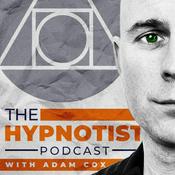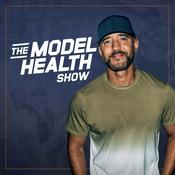47 episodes

REPLAY: The Science of New Year's Resolutions (And Why 91% Fail)
01/1/2026 | 1h 8 mins.
Encore presentation—ad-free! Support independent, evidence-based nutrition content on Patreon for bonus episodes, Q&As with Kylee, and our full archive.Every January, gyms overflow and 91% of resolutions get abandoned before spring. In this episode, we trace the surprisingly ancient history of New Year's resolutions—from Babylonian harvest promises to Roman offerings to Janus—and explore why our brains are so bad at sustaining behavior change.We debunk the myth that habits take 21 days to form (it's actually 18 to 254 days), explain why willpower is one of the least effective tools for lasting change, and dig into the neuroscience of why your cortisol-flooded prefrontal cortex might be working against you. Kylee breaks down the resolution patterns she sees in her nutrition practice—the athlete trying to drop 20 pounds in four weeks, the five-hour Sunday meal prep plans, the all-or-nothing thinking that turns one missed day into total abandonment—and shares how to set goals that actually stick.We cover Strava's "Quitters Day" phenomenon (January 19th), why dry January might backfire, and why positive reinforcement beats self-punishment every time. Plus: Woody Guthrie's charmingly chaotic 1943 list of "New Year's Rulin's," including "wash teeth, if any" and "help win war / beat Fascism."

Detoxes, Toxins, and Cleanses: The Science (and the Scam)
24/12/2025 | 1h 20 mins.
Do detoxes work? Do you need a juice cleanse to "reset" your body? Is your liver full of toxins? Short answer: no, no, and absolutely not.This week we debunk the $6.3 trillion wellness industry's claims,juice cleanses, detox teas, foot pads, coffee enemas, the Master Cleanse, and everything in between. We cover how your liver actually detoxifies, why your kidneys filter 200 quarts of blood daily without any help from celery juice, and what a 2015 systematic review concluded about the science of detoxes.We also dig into the history, from ancient Greek bloodletting to George Washington's death to John Harvey Kellogg's yogurt enemas (ew?) and the psychology of why we fall for purity narratives. Plus: why athletes are prime targets, the connection between "clean eating" and orthorexia, documented harms (kidney failure, electrolyte imbalances, rectal perforations (again, EW!)), and 8 red flags for spotting detox scams.95+ facts checked, 17 sources cited. Full references at https://www.yourdietsuckspodcast.comSponsors:Tailwind Nutrition – Sports nutrition without the BS. Code YOURDIET20 for 20% off at tailwindnutrition.comOsmia – Small-batch skincare made by a doctor who reads the research. Code YDS20 at osmiaorganics.comJanji – Running gear with purpose. Code YDS at janji.comMicrocosm Coaching – Work with coaches like Zoë and Kylee who get endurance athletes, no shame, no pseudoscience, just evidence-based training. Get connected with a coach at microcosmcoaching.com

Tallow, Toxins, and TikTok: What Skincare Gets Wrong Partner Episode with Osmia
12/12/2025 | 47 mins.
The skincare industry is worth over $180 billion globally. The science backing most of it? Let's just say your liver isn't the only organ that doesn't need a detox.This episode is sponsored by Osmia, Science-backed skincare formulated by a physician who actually reads PubMed. Use code YDS20 for 20% off your first order at osmiaskincare.com.This week we're doing something a little different: a partner episode with Osmia, one of our sponsors this season. But if you know YDS, you know we don't do puff pieces. Dr. Sarah Villafranco is a board-certified emergency medicine physician who left the ER to formulate skincare, and brought her doctor brain with her. She's here because she shares our allergy to pseudoscience, not because she's paying us to be nice—and we approached this conversation with the same critical lens we'd bring to any industry deep-dive. (You can read more about how we handle sponsorships and editorial independence at yourdietsuckspodcast.com/our-advertising-ethics-policy.)We talk about why tallow is the new wellness grift (sorry, ancestral girlies), what "natural" actually means when the FDA doesn't regulate it, and why your 20-step TikTok routine is probably making your skin worse. Sarah breaks down the three products that actually matter, explains why thicker doesn't mean more hydrating (remember: hydrate has "water" in it), and makes the case for the least sexy skincare advice ever spoken aloud: consistency.We also get into the ethics of beauty marketing, why "anti-aging" language is completely absent from everything Osmia does, and how to be your own N of 1 experiment when it comes to your skin, which should sound familiar if you've been listening to this show.Plus: the St. Ives Apricot Scrub accountability moment we all needed, why medicated lip balms are a scam, and the skincare equivalent of taking 500 supplements a day.If you've ever felt overwhelmed by serums, confused by "clean beauty" claims, or suspicious that the wellness industry just found a new way to sell you a crisis and then the cure, this one's for you.

Are Beauty Supplements a Scam?
10/12/2025 | 1h 13 mins.
Join our Patreon!Get YDS Merch for the holidays!Can you supplement your way to a glow? The $70 billion beauty supplement industry certainly wants you to think so.This week we dig into collagen, biotin, hyaluronic acid, and those $90 greens powders everyone's suddenly drinking, tracing the history from Lydia Pinkham's 19th-century vegetable compound to today's $60 Moon Juice dusts. We break down what the research actually says about "ingestible beauty" (and, crucially, who funded it), why high-dose biotin might give your doctor an unwelcome surprise, and the psychology of why we keep buying products that promise to fix us from the inside out.Also on the docket: the rise of "preventative Botox" among people under 30, the gut-skin axis (real science, grifty applications), and what actually supports skin, hair, and nail health, spoiler, it's boring. If you've ever wondered whether that greens powder is doing anything besides lightening your wallet, this one's for you.This episode is brought to you by:Tailwind Nutrition – Sports nutrition without the BS. Code YOURDIET20 for 20% off at tailwindnutrition.comOsmia – Small-batch skincare made by a doctor who reads the research. Code YDS20 at osmiaorganics.comJanji – Running gear with purpose. Code YDS at janji.comMicrocosm Coaching – Coaches who get endurance athletes. Free consultation at microcosmcoaching.com

Unpacking the Paleo Diet
26/11/2025 | 1h 9 mins.
Support us on Patreon, and see our full list of references on our website!Do you need to eat like a caveman to unlock your ancestral potential? Spoiler: no, and also, which caveman? The whole premise falls apart the second you ask a follow-up question.This week, we're taking on the Paleo Diet, not just what it says you should eat, but why it exists in the first place. Turns out the history goes way deeper than CrossFit bros and beef sticks. We trace the roots of "ancestral eating" back to 19th-century wilderness cults, Gilded Age masculinity panic, and a 1975 diet book with...some pretty dark roots. From there, we dig into why Paleo took off in Silicon Valley and the manosphere, how it became a $500 million industry selling you a return to nature via Amazon Prime, and what the research actually says about eliminating grains and legumes. Spoiler: your gut bacteria are not thrilled.Kylee breaks down the science on whole grains, the microbiome, and why the "mismatch hypothesis" doesn't hold up to evolutionary scrutiny. Zoë gets lost in Paleo subreddits, finds some surprisingly chill Burning Man content, and connects the dots between diet ideology, gender anxiety, and consumer capitalism.If you've ever wondered why some guy at your gym is very passionate about seed oils, this one's for you.This episode is brought to you by:Janji — Up to 30% off sitewide through December 1st. Code YDS for 10% off your first order at janji.comOsmia — 20% off Friday through Monday. Code YDS20 at osmiaskincare.comTailwind Nutrition — Code YOURDIET20 for 20% off your first order at tailwindnutrition.comMicrocosm Coaching — Book a free consultation at microcosmcoaching.com
More Health & Wellness podcasts
Trending Health & Wellness podcasts
About Your Diet Sucks
Listen to Your Diet Sucks, Maintenance Phase and many other podcasts from around the world with the radio.net app

Get the free radio.net app
- Stations and podcasts to bookmark
- Stream via Wi-Fi or Bluetooth
- Supports Carplay & Android Auto
- Many other app features
Get the free radio.net app
- Stations and podcasts to bookmark
- Stream via Wi-Fi or Bluetooth
- Supports Carplay & Android Auto
- Many other app features


Your Diet Sucks
download the app,
start listening.







































